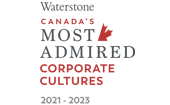As vaccination rates increase and the economy re-opens, many organizations are announcing flexible/hybrid return to work plans, and individuals are beginning to make vacation plans. There is a renewed sense of hope and a feeling of things returning to “normal.”
According to a recent report from RBC Economics, however, there will also be an increase in the number of employees choosing to retire or quit their jobs in the latter part of 2021. Some of this may be related to employees feeling burned out from the challenges faced during the pandemic, while others may not want to return to the office if required to do so.
However, the anticipated increase in retirements may also be because people are feeling more confident about their finances and readiness to retire. This is supported by the same RBC report, which indicates retirement frequency dropped during the pandemic, possibly due to financial uncertainty and general anxiety, especially during the severe market downturn experienced in March 2020. Although there was an unprecedented recovery, people were cautious of a potential second decline.
Tailored solutions and strategic approaches for workplace retirement savings plans.
Another survey conducted by FP Canada revealed that financial stress is the number one source of stress for Canadians surveyed, with 38% reporting finances are their top stressor—even more than health, work, or relationships. Almost one-half of respondents said the pandemic has directly impacted their level of financial stress.
These two factors—an anticipated increase in retirements and increased financial stress—seem to contradict each other. However, this may also be because millennials and gen-Xers were over two-thirds more likely than baby boomers to say the pandemic set them back financially, forcing them to withdraw from their retirement plans (Natixis Investment Managers by CoreData).
The good news is that consumer debt is down, with the debt-to-income ratio dropping from 178.29 in 2020 Q1 to 169.09 in 2021 Q1. Household wealth is improving, driven in large part by the hot real estate market.
Regardless of whether the pandemic has impacted individuals positively or negatively, as an employer, you can help your employees by:
- Including financial wellness as one pillar of your overall wellness strategy and initiatives
- Reminding employees about their Employee and Family Assistance Program (EFAP) if you offer one; most programs include tools to support financial literacy
- Offering flexible retirement and savings plans with company matching contributions; many Canadians say they are willing to forgo a higher salary in exchange for a workplace pension plan (Abacus Data)
- Providing tools and education related to financial literacy and retirement readiness (both financial and psychological readiness), tailored to the needs of the various generations on your teams
- Making one-on-one financial support available based on the diversity of employees’ state of economic wellbeing, as individual needs may differ
- Supporting employees who are ready to retire with decumulation strategies and one-on-one support to help them navigate the decisions that are part of retirement
When you have employees who are more financially “literate” and “well” and, for those choosing retirement, feeling prepared and ready to retire, their stress levels will decrease, and productivity and engagement levels will increase.






